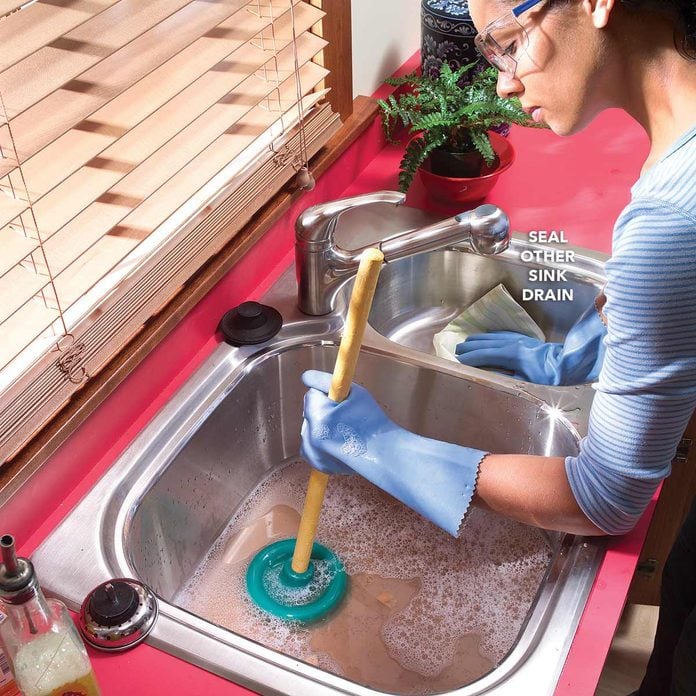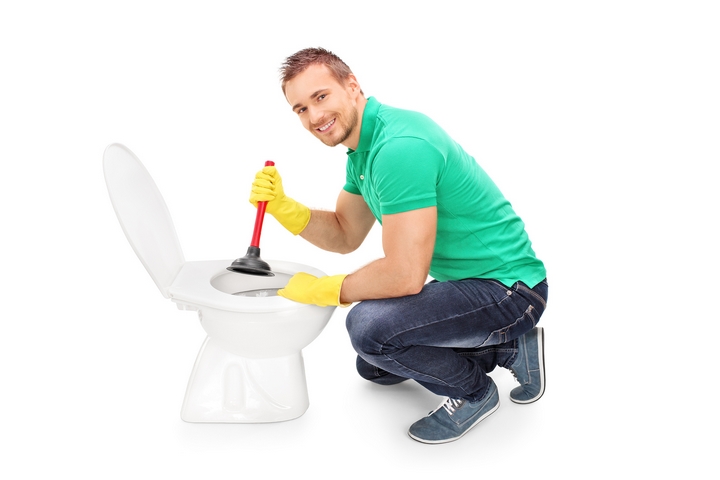Perfecting Plunger and Drain Cleaners: Pro Methods
Perfecting Plunger and Drain Cleaners: Pro Methods
Blog Article
We've noticed this great article involving A Guide to Plungers (and How to Use Them) below on the net and decided it made sense to relate it with you on this site.

Intro
Proper maintenance of house drains is crucial for avoiding blockages and ensuring smooth water flow. One of the secret devices in every home owner's toolkit is the bettor, alongside different drainpipe cleaners made to tackle persistent obstructions efficiently. This write-up explores exactly how to make use of plungers and drainpipe cleaners efficiently to maintain your drains streaming freely.
Section 1: Recognizing Plungers
Kinds of Plungers
There are numerous types of plungers readily available, each designed for different sorts of drains pipes and blocks. The most usual kinds include cup bettors, flange plungers, and accordion plungers.
Just How Plungers Job
Bettors work with the concept of creating stress and suction to displace blockages. When properly used over a drainpipe, they develop a vacuum cleaner that can take out debris or break up clogs.
Picking the Right Bettor
Picking the right bettor relies on the kind of drainpipe and the nature of the clog. Mug bettors are optimal for sinks and tubs, while flange plungers are much better suited for commodes as a result of their style.
Common Blunders with Plungers
Avoiding these errors makes certain effective plunging: inappropriate seal around the drain, inadequate pressure, and not clearing surrounding particles.
Area 2: Utilizing Plungers Properly
Preparation
Prior to diving, make sure the plunger covers the drainpipe completely and develops a limited seal. Clear any kind of visible particles around the drain opening.
Method
Start with gentle diving activities to develop suction. Boost stress gradually, utilizing a consistent rhythm. Repeat as required till the drainpipe gets rid of.
Fixing Tips
If plunging doesn't work, attempt readjusting the seal, using petroleum jelly for a far better seal, or making use of a different sort of plunger.
Area 3: Understanding Drain Cleaning Company
Types of Drain Cleaning Company
Drain cleaners can be chemical or enzymatic. Chemical cleansers make use of strong chemicals to dissolve blockages, while chemical cleansers use natural enzymes to break down organic matter.
Exactly How Drainpipe Cleansers Job
Chemical cleansers respond with obstructions to liquify them, while chemical cleansers break down organic materials like hair and grease without hurting pipes.
Security Considerations
Always use gloves and eye protection when using chemical drainpipe cleansers. Ensure sufficient air flow and comply with manufacturer directions carefully.
Eco-Friendly Alternatives
Take into consideration utilizing vinegar and cooking soda or enzyme-based cleansers for environment-friendly choices that are more secure for pipes and the setting.
Section 4: Utilizing Drainpipe Cleansers Properly
Application Techniques
Pour chemical cleansers straight right into the drainpipe opening. Allow them to benefit the advised time before purging with warm water. Enzymatic cleansers need to rest overnight.
Precautions
Prevent mixing various types of cleaners, as this can generate hazardous fumes. Never ever use chemical cleaners combined with a plunger, as splashing can happen.
Taking Care Of Persistent Obstructions
For persistent clogs, consider using a plumbing serpent or calling a specialist plumber to stop damages to pipelines.
Final thought
To conclude, understanding how to make use of bettors and drain cleansers successfully is necessary for preserving healthy pipes systems. By selecting the right devices and methods, property owners can take on minor obstructions and stop major pipes issues down the line.
How To Properly Use A Plumbing Snake To Clear Drains
When any drain clogs in our home arise, we tend to gravitate toward the plunger and little else. In cases where the plunger and its vacuum-created pressure are not able to clear clogs, many immediately move to harmful chemicals or simply call their plumber to fix the issue.
we’re happy to help with all drain cleaning needs and concerns. This includes informing you on a few other home remedies you may have at your disposal for minor to moderate clogs, one of which is the use of a plumbing snake. Many people have never used one of these before – let’s go over the steps to take when your drain clogs and you have a plumbing snake available.
Attempt Plunger Use
The first step here, as we noted above, should indeed be to grab your plunger when you notice a drain clog and attempt to resolve it this way. If you’re unsure how to use a particular type of plunger, our plumbers can answer any questions you have. If this doesn’t do the trick, however, you move on to the snake.
Locate And Prepare Snake
A plumbing snake is a metal or plastic device that’s generally about a quarter of an inch thick. It’s design with significant extensions, meant to reach down into your clogged drain and push the clog out. Snakes also contain drain augers that will latch onto and push stubborn blockages.
If your plunger doesn’t clear a clog, locate your snake and bring it to the drain in question. We also recommend keeping a bucket nearby to collect the clog once you pull it out, plus we’d advise wearing goggles and possibly protective gloves.
Feed Snake
Once you’re ready to go, feed the snake slowly down the drain, using the crank device it comes with to keep it moving until it finds the clog. Once this happens, much of the clog will be latched onto the coil so you can pull it out, while the rest will simply break up and flow downward.
Detach Debris
Remove the snake slowly from the drain, and once you’ve done so, pick off any debris that’s stuck to the coil. This is another area where wearing gloves is a must.
Flush Drain
Finally, take a few minutes to ensure the snake has done its job correctly. If you’ve been using it on a toilet, flush the toilet a couple times and make sure everything flows well. If you’ve used it on a different drain, flush it with some room temperature water.
https://www.mybuddytheplumber.com/blog/how-to-properly-use-a-plumbing-snake-to-clear-drains/

Application Techniques
Pour chemical cleansers straight right into the drainpipe opening. Allow them to benefit the advised time before purging with warm water. Enzymatic cleansers need to rest overnight.
Precautions
Prevent mixing various types of cleaners, as this can generate hazardous fumes. Never ever use chemical cleaners combined with a plunger, as splashing can happen.
Taking Care Of Persistent Obstructions
For persistent clogs, consider using a plumbing serpent or calling a specialist plumber to stop damages to pipelines.
Final thought
To conclude, understanding how to make use of bettors and drain cleansers successfully is necessary for preserving healthy pipes systems. By selecting the right devices and methods, property owners can take on minor obstructions and stop major pipes issues down the line.
How To Properly Use A Plumbing Snake To Clear Drains
When any drain clogs in our home arise, we tend to gravitate toward the plunger and little else. In cases where the plunger and its vacuum-created pressure are not able to clear clogs, many immediately move to harmful chemicals or simply call their plumber to fix the issue.
we’re happy to help with all drain cleaning needs and concerns. This includes informing you on a few other home remedies you may have at your disposal for minor to moderate clogs, one of which is the use of a plumbing snake. Many people have never used one of these before – let’s go over the steps to take when your drain clogs and you have a plumbing snake available.
Attempt Plunger Use
The first step here, as we noted above, should indeed be to grab your plunger when you notice a drain clog and attempt to resolve it this way. If you’re unsure how to use a particular type of plunger, our plumbers can answer any questions you have. If this doesn’t do the trick, however, you move on to the snake.
Locate And Prepare Snake
A plumbing snake is a metal or plastic device that’s generally about a quarter of an inch thick. It’s design with significant extensions, meant to reach down into your clogged drain and push the clog out. Snakes also contain drain augers that will latch onto and push stubborn blockages.
If your plunger doesn’t clear a clog, locate your snake and bring it to the drain in question. We also recommend keeping a bucket nearby to collect the clog once you pull it out, plus we’d advise wearing goggles and possibly protective gloves.
Feed Snake
Once you’re ready to go, feed the snake slowly down the drain, using the crank device it comes with to keep it moving until it finds the clog. Once this happens, much of the clog will be latched onto the coil so you can pull it out, while the rest will simply break up and flow downward.
Detach Debris
Remove the snake slowly from the drain, and once you’ve done so, pick off any debris that’s stuck to the coil. This is another area where wearing gloves is a must.
Flush Drain
Finally, take a few minutes to ensure the snake has done its job correctly. If you’ve been using it on a toilet, flush the toilet a couple times and make sure everything flows well. If you’ve used it on a different drain, flush it with some room temperature water.
https://www.mybuddytheplumber.com/blog/how-to-properly-use-a-plumbing-snake-to-clear-drains/

We were brought to that report about from an associate on a different web blog. Are you aware of somebody else who is fascinated about A Guide to Plungers (and How to Use Them)? Take a moment to share it. We cherish your readership.
Click Here To Find Out More Report this page